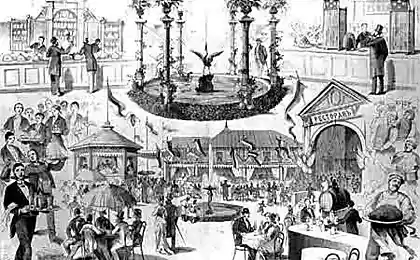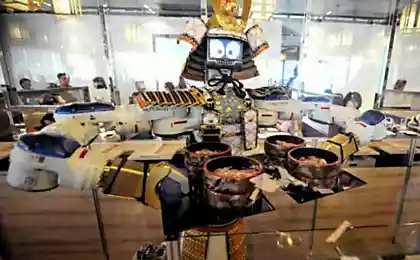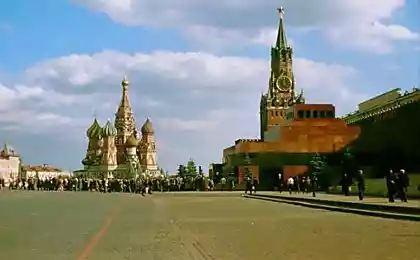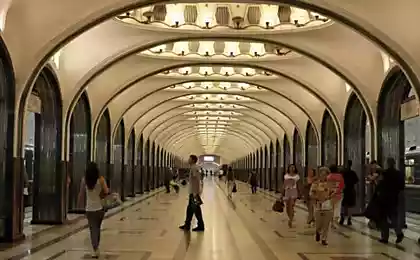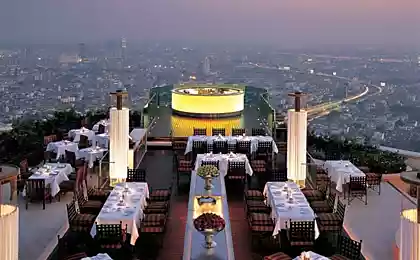224
About the trip to which restaurant dreamed of all Soviet ladies
Is it true that the legendary Savoy restaurant in Moscow was renamed 4 times? What dishes were his hallmark in the Soviet years and why he so frightened drunken visitors? Answers to all these questions in our article.
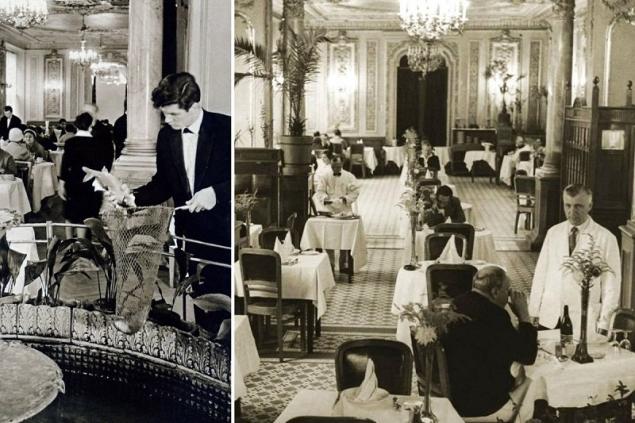
Back in the late XIX century in the house on the corner of Sofia (now - Cannon Street) and Christmas opened a German restaurant "Alpenrose".
Vladimir Alekseevich Gilyarovsky, who vividly described the culinary preferences, life and customs of Muscovites, wrote about it as a popular place where artists and creative intelligentsia regularly gathered.
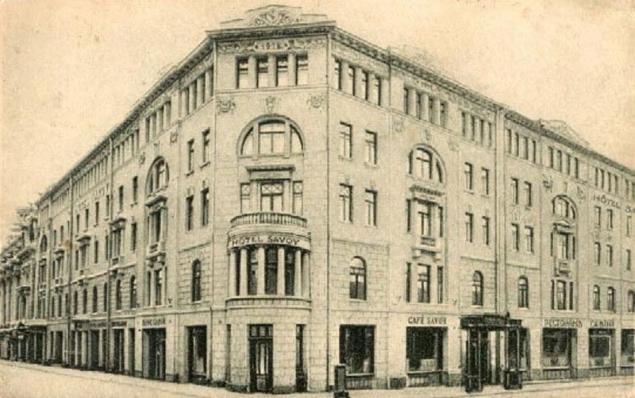
In 1909, the restaurant was bought by the insurance company Salamander. The new owners decided to rebuild the building and open a hotel and restaurant.
The first guests settled in the hotel, dubbed "Berlin", in March 1913. The convenience of guests served bathrooms with hot water, elevators, phones and safes in each room. And all this for 2 rubles 50 kopecks a day.
Particular admiration was caused by the pretentious interior of the restaurant and the luxurious marble fountain, in which live fish swam. The picture was complemented by rich stucco and irregularly shaped Venetian mirrors on the ceiling.
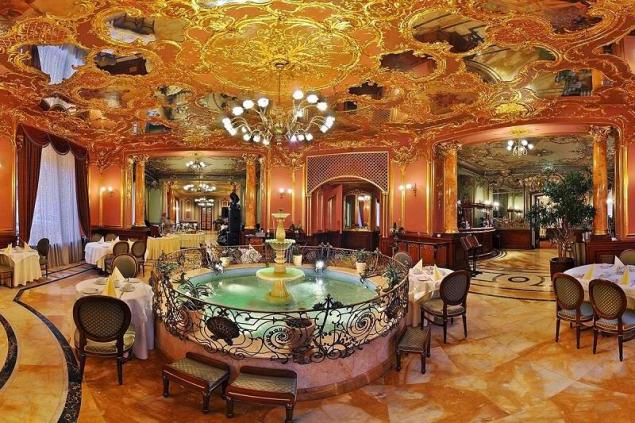
With the outbreak of the First World War, the hotel complex was renamed Savoy. This was the name of the most popular hotel at that time in the heart of the theater quarter of London.
After the revolution of 1917, the hostel of the People’s Commissariat of Foreign Affairs was placed in the hotel. And in 1931, together with the Metropol and the National, it became part of the All-Union Joint Stock Company Hotel (later Intourist).
In Moscow in the mid-1920s, the Savoy restaurant was a unique place. For good money, it was possible to acquire the remains of old wine reserves from the cellars of Abrau-Durso and nationalized Smirnov warehouses.
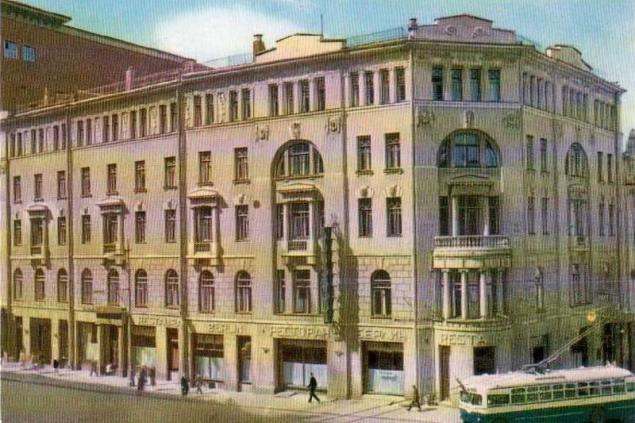
In 1926, it was in Savoy that silent movie stars Mary Pickford and Douglas Fairbanks stayed. Guests of the hotel at different times were Vladimir Mayakovsky, Sergey Yesenin and Isadora Duncan. Guests include Romain Rolland, Henri Barbus, John Steinbeck, Luciano Pavarotti and Patricia Kaas, Richard Gere and Julia Ormond.
In 1958, as a sign of friendly relations between the USSR and the GDR, the hotel and restaurant were again called "Berlin". As it could not have happened, and long standing at the front staircase stuffed bear - a symbol of Berlin.
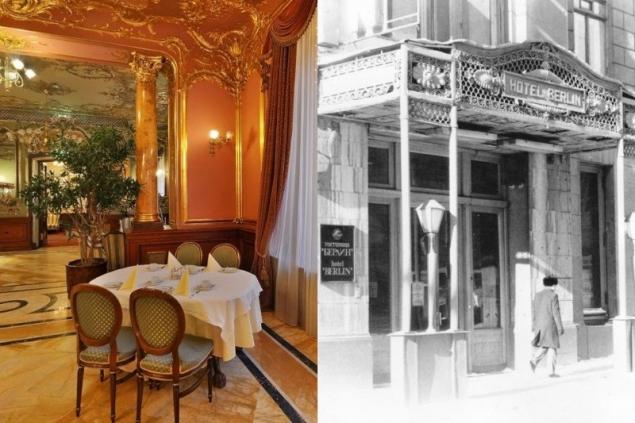
Old-timers recall that drunken visitors, stumbling upon him, were mildly shocked. An unpleasant surprise for other loosely standing on the feet of lovers of alcohol became a fountain in the center of the restaurant. The waiters often had to snatch bad customers from it.
Unlike the restaurant "Hermitage", "Savoy", and then "Berlin" did not become the birthplace of the legendary salad in the CIS. But his cuisine has traditionally been considered one of the best in Moscow.
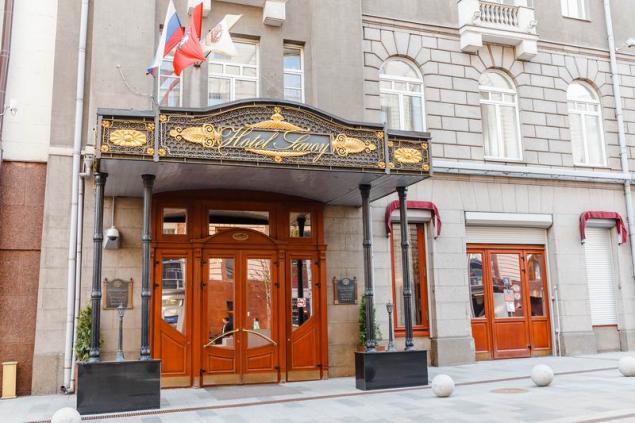
To get into a restaurant a Soviet man had to give a doorman 25 rubles! That was a lot of money at the time. What did they feed the lucky ones?
You could eat pickled herring rollopops, which the same Gilyarovskiy called “sobering up”. It was worth it in the 1970s as much as 81 cents.
To justify the name, the menu included German dishes. Many Muscovites still remember the delicious "Berlin" solyak. To achieve a special taste, she was languished in the oven.
German cuisine includes salad "Berlin", German cookies "Pig Ear" and sweet imperial omelet "Kaiserschmarn". But the special chic was to order carp in sour cream. In front of the visitors, the maitre d'hotel with a net caught it in the fountain, and then solemnly carried the finished dish into the hall.
In 1988, the name "Berlin" was changed to "Savoy". The famous bear was removed to the chagrin of the old-timers.
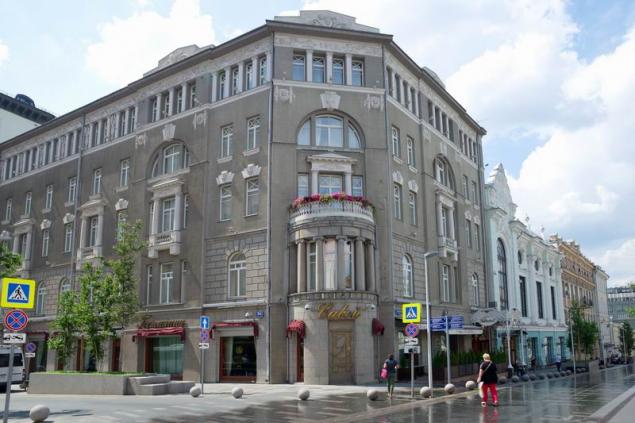
But one of the oldest restaurants in Moscow still welcomes visitors with a luxurious interior in the style of retro and a warm atmosphere of the Savoy.

Back in the late XIX century in the house on the corner of Sofia (now - Cannon Street) and Christmas opened a German restaurant "Alpenrose".
Vladimir Alekseevich Gilyarovsky, who vividly described the culinary preferences, life and customs of Muscovites, wrote about it as a popular place where artists and creative intelligentsia regularly gathered.

In 1909, the restaurant was bought by the insurance company Salamander. The new owners decided to rebuild the building and open a hotel and restaurant.
The first guests settled in the hotel, dubbed "Berlin", in March 1913. The convenience of guests served bathrooms with hot water, elevators, phones and safes in each room. And all this for 2 rubles 50 kopecks a day.
Particular admiration was caused by the pretentious interior of the restaurant and the luxurious marble fountain, in which live fish swam. The picture was complemented by rich stucco and irregularly shaped Venetian mirrors on the ceiling.

With the outbreak of the First World War, the hotel complex was renamed Savoy. This was the name of the most popular hotel at that time in the heart of the theater quarter of London.
After the revolution of 1917, the hostel of the People’s Commissariat of Foreign Affairs was placed in the hotel. And in 1931, together with the Metropol and the National, it became part of the All-Union Joint Stock Company Hotel (later Intourist).
In Moscow in the mid-1920s, the Savoy restaurant was a unique place. For good money, it was possible to acquire the remains of old wine reserves from the cellars of Abrau-Durso and nationalized Smirnov warehouses.

In 1926, it was in Savoy that silent movie stars Mary Pickford and Douglas Fairbanks stayed. Guests of the hotel at different times were Vladimir Mayakovsky, Sergey Yesenin and Isadora Duncan. Guests include Romain Rolland, Henri Barbus, John Steinbeck, Luciano Pavarotti and Patricia Kaas, Richard Gere and Julia Ormond.
In 1958, as a sign of friendly relations between the USSR and the GDR, the hotel and restaurant were again called "Berlin". As it could not have happened, and long standing at the front staircase stuffed bear - a symbol of Berlin.

Old-timers recall that drunken visitors, stumbling upon him, were mildly shocked. An unpleasant surprise for other loosely standing on the feet of lovers of alcohol became a fountain in the center of the restaurant. The waiters often had to snatch bad customers from it.
Unlike the restaurant "Hermitage", "Savoy", and then "Berlin" did not become the birthplace of the legendary salad in the CIS. But his cuisine has traditionally been considered one of the best in Moscow.

To get into a restaurant a Soviet man had to give a doorman 25 rubles! That was a lot of money at the time. What did they feed the lucky ones?
You could eat pickled herring rollopops, which the same Gilyarovskiy called “sobering up”. It was worth it in the 1970s as much as 81 cents.
To justify the name, the menu included German dishes. Many Muscovites still remember the delicious "Berlin" solyak. To achieve a special taste, she was languished in the oven.
German cuisine includes salad "Berlin", German cookies "Pig Ear" and sweet imperial omelet "Kaiserschmarn". But the special chic was to order carp in sour cream. In front of the visitors, the maitre d'hotel with a net caught it in the fountain, and then solemnly carried the finished dish into the hall.
In 1988, the name "Berlin" was changed to "Savoy". The famous bear was removed to the chagrin of the old-timers.

But one of the oldest restaurants in Moscow still welcomes visitors with a luxurious interior in the style of retro and a warm atmosphere of the Savoy.
How to wet apples for the winter in a bucket and in banks
Cake "Napoleon" from the extraction dough according to the recipe of a clever gypsy
